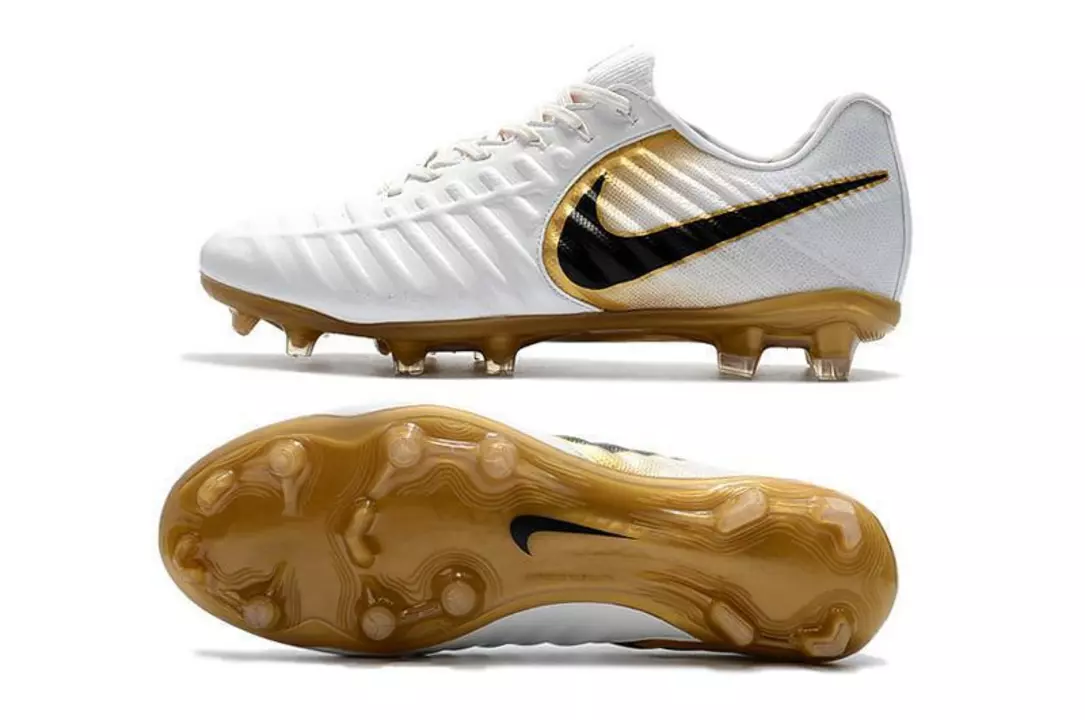The Benefits of Kangaroo Leather in Soccer Cleats
Kangaroo leather, also known as K-leather, is a popular material used in the production of soccer cleats. In this section, we will discuss the benefits of using kangaroo leather in soccer cleats and how it can enhance your performance on the field. One of the main reasons why K-leather is preferred by soccer players is due to its softness and flexibility. The natural fibers in kangaroo leather allow it to stretch and mold to the shape of your foot, providing a comfortable and snug fit.
Another advantage of kangaroo leather is its durability. Despite being lightweight and thin, K-leather is incredibly strong and resistant to wear and tear. This makes it an ideal material for soccer cleats, as they are subject to a lot of stress during a game. In addition, kangaroo leather is also water-resistant, which means that it can maintain its shape and performance even in wet conditions.
Furthermore, kangaroo leather provides excellent touch and ball control. The thinness of the material allows for a better feel of the ball, which can improve your dribbling and passing skills. Plus, the natural grip of K-leather helps to prevent the ball from slipping off your foot during play.
Overall, kangaroo leather offers a perfect combination of comfort, durability, and performance, making it an excellent choice for soccer cleats.
Environmental and Ethical Concerns
While kangaroo leather has many benefits, it's essential to address the environmental and ethical concerns surrounding its production. Kangaroo leather is a by-product of the kangaroo meat industry, which is regulated by the Australian government. The government enforces strict quotas and guidelines to ensure that the kangaroo population is not negatively impacted.
However, some people argue that the harvesting of kangaroos for their leather and meat is inhumane, as it can lead to unnecessary suffering and death of these animals. There are also concerns about the impact of kangaroo harvesting on the Australian ecosystem, as kangaroos play a crucial role in maintaining the balance of flora and fauna.
As a result, many manufacturers and soccer players are opting for alternative materials, such as synthetic leathers or other natural leathers, that have less of an environmental and ethical impact. It's essential to weigh the benefits of kangaroo leather against these concerns when choosing the right soccer cleats for you.
Alternative Materials to Kangaroo Leather
As mentioned earlier, there are several alternative materials available for those who prefer not to use kangaroo leather in their soccer cleats. These alternatives can still provide the performance and comfort benefits that players seek. Some popular alternatives include:
1. Calfskin leather: This leather is soft, comfortable, and provides a great touch on the ball. However, it's not as durable or water-resistant as kangaroo leather.
2. Full-grain leather: This material is thicker and more durable than calfskin, but it's not as soft or flexible. It offers good water resistance and can be a suitable alternative for those who prioritize durability over comfort.
3. Synthetic leather: Modern synthetic leathers have come a long way in terms of performance and comfort. They are lightweight, durable, and often more affordable than natural leathers. However, they may not provide the same level of touch and ball control as kangaroo leather.
Ultimately, the choice of material will depend on your personal preferences, budget, and performance needs.
How to Care for Kangaroo Leather Soccer Cleats
To ensure the longevity and performance of your kangaroo leather soccer cleats, it's crucial to care for them properly. Here are some tips to help you maintain your K-leather cleats:
1. Clean your cleats after each use: Use a soft brush or cloth to remove dirt and debris from the leather. Avoid using water, as it can harm the leather over time.
2. Dry your cleats properly: Air dry your cleats away from direct sunlight and heat sources, which can cause the leather to crack and lose its shape.
3. Condition your cleats regularly: Apply a leather conditioner specifically designed for soccer cleats to keep the leather soft and supple. This will help prevent cracking and maintain the cleats' performance.
4. Store your cleats in a cool, dry place: Avoid storing your cleats in damp or humid environments, as this can lead to mold growth and damage the leather.
By following these care tips, you can prolong the life of your kangaroo leather soccer cleats and enjoy their benefits for many seasons to come.
Popular Brands Offering Kangaroo Leather Soccer Cleats
Several well-known soccer brands offer kangaroo leather soccer cleats, catering to players who prefer the comfort, touch, and performance of this material. Some popular brands include:
1. Nike: The Nike Tiempo series features kangaroo leather cleats that are highly regarded for their comfort and performance.
2. Adidas: The Adidas Copa series also offers K-leather cleats, known for their excellent touch and durability.
3. Puma: The Puma King series is another popular option for those seeking kangaroo leather cleats, renowned for their classic design and performance.
These brands, among others, provide a variety of styles and price points to suit different players' needs and budgets.
Final Thoughts on Kangaroo Leather Soccer Cleats
In conclusion, kangaroo leather soccer cleats offer numerous benefits, including comfort, durability, and excellent ball control. However, it's essential to consider the environmental and ethical concerns surrounding the production of kangaroo leather when making your decision. With various alternative materials available, you can find soccer cleats that meet your performance needs and personal preferences. Remember to care for your soccer cleats properly to ensure they last and perform to their fullest potential.
